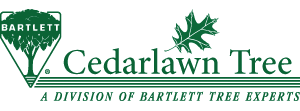Tips for Identifying Trees – Part I
Tips for Identifying Trees – Part I
Ever wonder how arborists are able to identify trees to species? Do you know what species of trees are on your property? In the next series of blogs we will identify the characteristics to look for when attempting to identify a tree.
These species, however, mostly (yews are an exception) all have structures that we would recognize as cones for fruit and this is why the cone-bearing versus non cone-bearing distinction is the appropriate one to make.
Cones can take on many types of appearances. Some are more typical of what people commonly think of as a cone (pine cones for example). Others are less typical such as arborvitae cones. However, when the scales that contain the seeds are opened the seeds are exposed and are not surrounded by any type of structural encasement. That is why the botanical term gymnosperm (naked seed) is used to describe these cone-bearing trees.
The examination of the foliage is the next step in determining what tree it is once you have determined that it is a conifer. Is the foliage needle-like (pines, spruces, etc.) or does it have flattened foliage (arborvitae, hemlock, etc.)? Are the needles bundled together in groups (pines) or is each needle separate? How long are the needles? How are they attached to branches? In the next blog we will examine these characteristics on various species of conifers to see how they differ.

Japanese white pine foliage and cone







